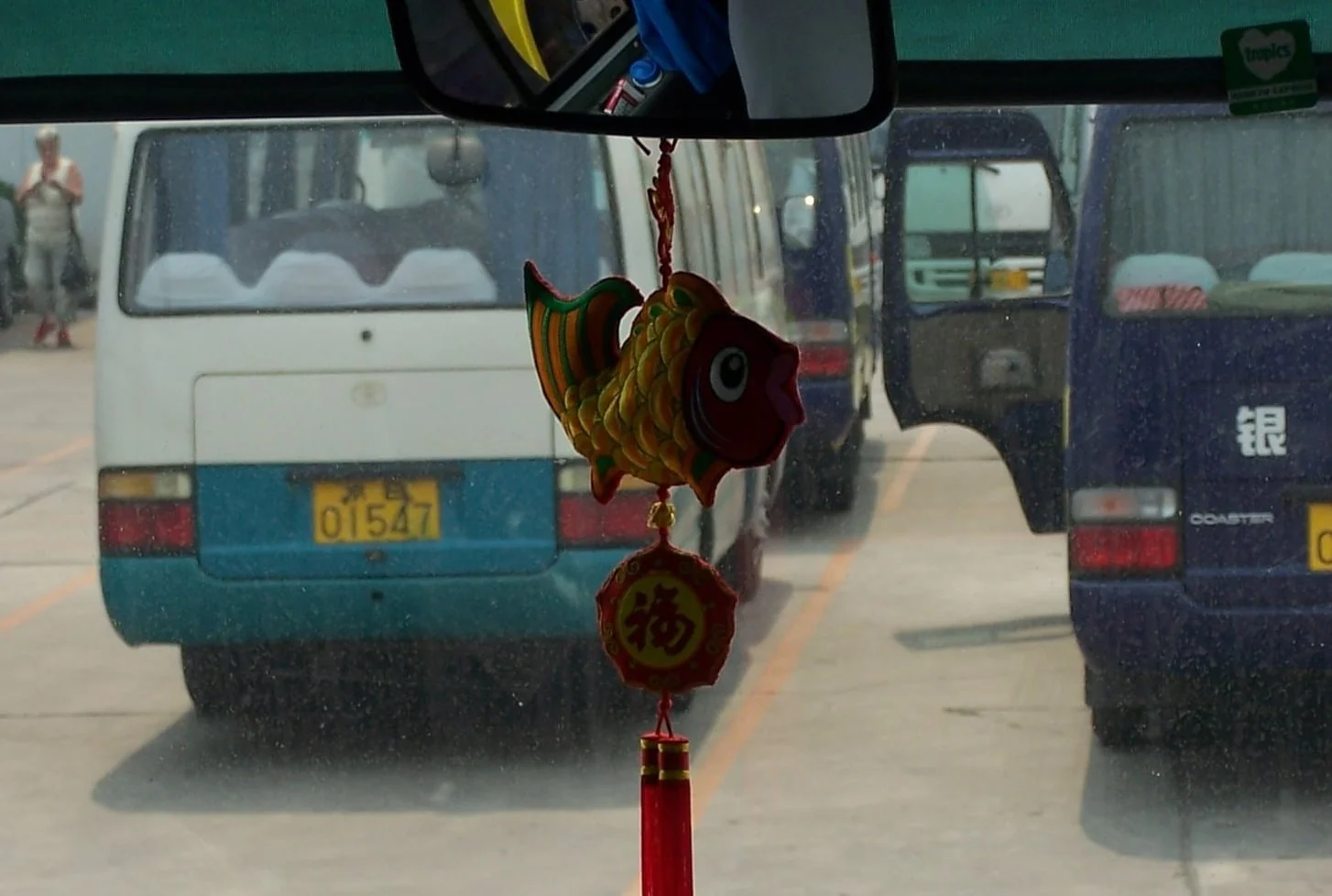Once you see them, they're everywhere you look.
If you've never been to China, Japan, Korea or elsewhere in East Asia, the first few days of your trip seem like a highlight reel run at high speed. After your jet lag has worn off and you've gotten used to your hotel's neighborhood, you’ll start noticing cultural patterns, like the uniforms the school kids wear, when rush hour is, and when people go out to eat.
One of these patterns is the artistic use of specific animals in specific places or situations. You’ll see the same “cat with one paw in the air” figurine near cash registers. Dragons don’t need explanation. And then we have the fish.
Touristy gift shops everywhere in East Asia will have scrolls, prints, and t-shirts with variations on an image like this:
Photo by Mitch Altman via Flickr, CC 2.0 license
Your tour bus will likely have a fish or two hanging up by the driver. Shops, offices, almost any place of business seems to have them - some low-key and unobtrusive; others smack in the middle of the place and in garish colors.
The textbook rationale says “fish are a symbol of prosperity” and that they are displayed with wishes of good luck and fortune; a 'meme' started by the Chinese that spread throughout the region with trade and shared religious experiences. But there’s more than that.
Photo by cbransto via Flickr, CC 2.0 license
First, with enough of that local baiju, if you stare at a carp’s face, with its big eyes, scales, and whiskers, you can imagine a dragon. There’s an old saying that a fish who jumps up over the waterfall at the source of the Yellow River will turn into a dragon - a parable that encourages hard work with the promise of great rewards.
More importantly, spoken Chinese language works to create multiple shades of meaning. The word for “fish” is a great example.
Ancient Chinese speech and writing began with the most basic and everyday elements. Over time, as society became more complex and more words were needed, meanings were added on to existing words, and new characters were created.
But the “catch” with Chinese is that the language uses fewer distinct sounds (phonemes) than European or Arabic languages, partly because that’s how the early languages started, and partly because of all that colonization, conquest, and cross-pollination. We Westerners use far more sounds in daily speaking than Chinese do.
Put another way, Chinese is overloaded with homonyms. Spoken Chinese is extremely concise, but both people in a conversation need to know what they’re talking about.
So, the word for fish: 鱼 yú
Sounds like these words:
裕 yù abundant (imagine many fish swimming)
腴 yú fertile; rich (fish have many offspring; a full net of fish = rich)
煜 yù brilliant; glorious (like shimmering scales)
玉 yù jade (because it’s brilliant)
慾 yù desire; wish (for some fish, or some jade)
矞 yù grand; elegant (getting further away from the original meaning, but someone wearing jade looks elegant)
誉 yù reputation
伃 yú handsome
And the word for goldfish: 金鱼jīnyú literally starts with the character for gold / money.
If you want success or more money (or more children?) or a happy marriage, then, hang up some fish.
This quality of the Chinese language, with so many homonyms and rhyming words, gets you into all sorts of word games, numerology, and superstition as you dive deeper. Like fish, what you see with a surface view only tells you part of what's going on - and that's why traveling in Asia is so useful to understanding its many cultures.




